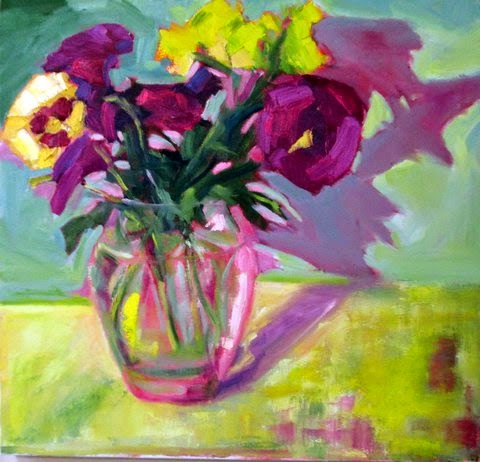Encountering Grunewald
First, one seeks to become an artist by training the hand. Then one finds it is the eye that needs improving. Later one learns it is the mind that wants developing, only to find that the ultimate quest of the artist is in the spirit. (Larry Brullo)
Following a suggestion while traveling in France just recently, we drove a hour south of Strasbourg where we were staying to check out the Unterlinden museum in Colmar, France. Exploring Colmar was easy to do and it's full of beauty and history like the rest of Alsace. I was interested in seeing the Isenheim Altarpiece by Matthias Grünewald (b.1475-d.1480).
Matthias Grünewald (original name Mathis Gothardt Neithardt), one of the greatest German painters of his age, whose works on religious themes achieve a visionary expressiveness through intense colour and agitated line. The wings of the altarpiece of the Antonite monastery at Isenheim, in southern Alsace (dated 1515), are considered to be his masterpiece.
The complete altarpiece is displayed in the Dominican Abbey, in a soaring space with stained glass windows. All six panels by Grunewald are there as well as the sculpted inner panels by Niclaus of Haguenau.
I had no idea how powerful these works would be. They are almost life sized, and the artistic intensity of the paintings was palpable in a way I wouldn't have guessed from the reproductions I'd seen. I got close and looked. There is a spiritual glow to the haloed figures of Christ and Mary and God that looked artificial to me in reproductions, but live and in person it was otherworldly. The sense of life in the figures is magical. They spoke without words.
Then there is the bizarre, gory, and well, gross quality to the demons torturing St Anthony and the depictions of death and suffering. This altarpiece was made for the Isenheim monastery just outside of Colmar around 1515.Established around 1300, the Isenheim monastery belonged to Saint Anthony’s order, which had been founded in the Dauphin region of France in the 11th century. The monks of the Antonite order ministered to victims of Saint Anthony’s fire, a horrible illness that was common in the Middle Ages. This calamity’s cause is now known to be poisoning from a fungus (ergot) that grows on rye grass, thus contaminating the rye flour used in making bread. Ergot contains a chemical that drives its victims mad and results in gangrene of the hands and feet due to constriction in blood flow to the extremities. This art was made to reassure and provide hope and comfort victims of this disease.
It's Grunewald's ability to express both the transcendent spiritual essence of the Crucifixion story and his amazing depiction of ugliness and madness that make this such a moving piece.
I never understood any of this when looking at reproductions of this work in print or online. I couldn't find much in the public domain to illustrate this blog, although there are some to look at below. It reminds me that art is best experienced in it's original state. So go to your nearest museum or gallery and be moved by something in the language of paint!





Comments
Post a Comment